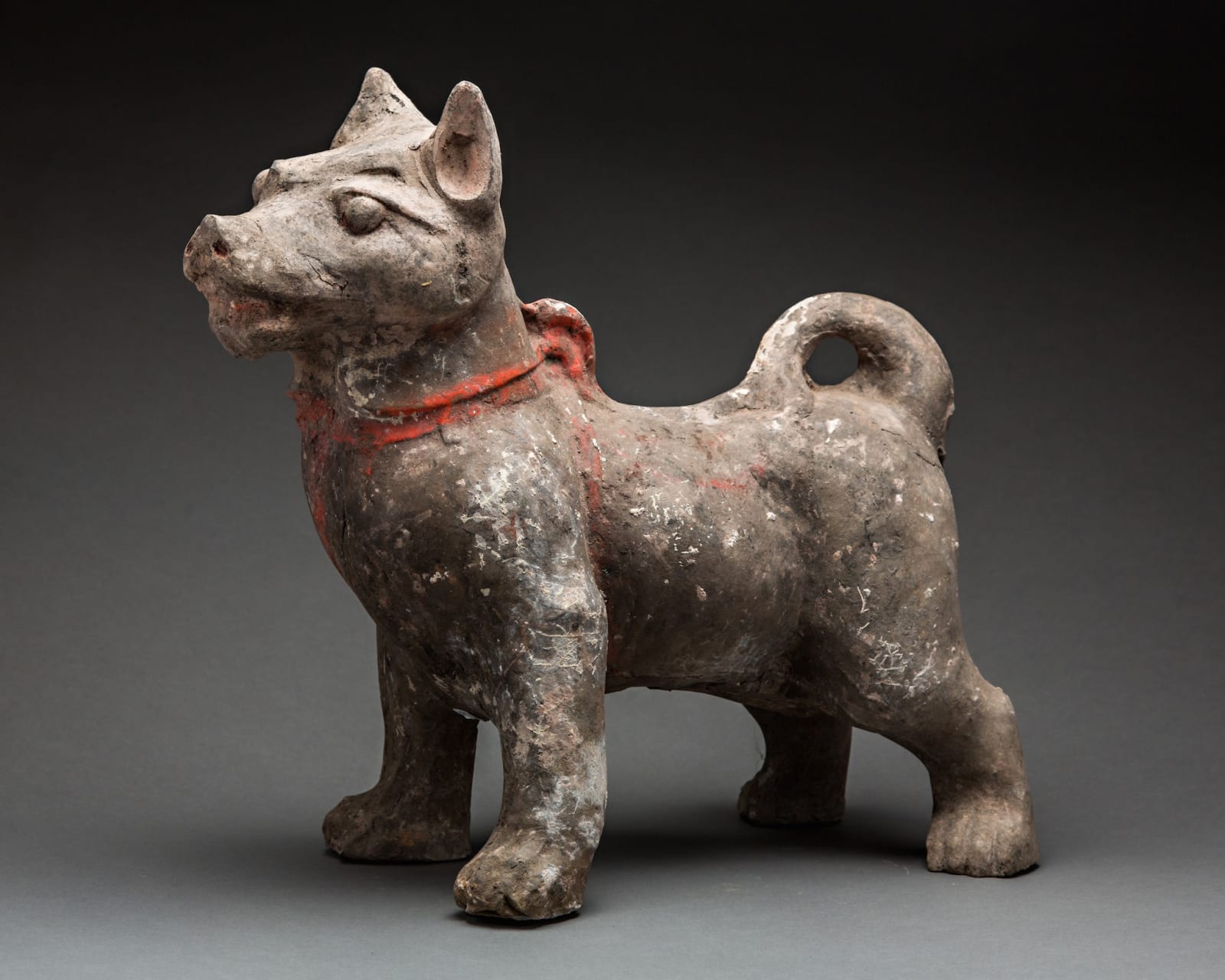Han Dynasty Polychrome Sculpture of a Dog, 206 BC - AD 220
Ceramic, Pigment
41.3 x 22.3 x 45 cm
16 1/4 x 8 3/4 x 17 3/4 in
16 1/4 x 8 3/4 x 17 3/4 in
TF.022
This magnificent terracotta dog dates to the Han era, the golden age of ceramic funerary sculpture. The fashion for terracotta grave goods, also known as mingqi, was undoubtedly stimulated by...
This magnificent terracotta dog dates to the Han era, the golden age of ceramic funerary sculpture. The fashion for terracotta grave goods, also known as mingqi, was undoubtedly stimulated by the example of the first emperor of the Qin Dynasty whose terracotta army is now legendary. Terracotta replicas of attendants, entertainers and domesticated animals – which replaced their sentient counterparts sacrificed in earlier dynasties – were among the items interred to ensure the material comfort of the deceased in the afterlife. This practice continued to flourish until the fall of the Tang dynasty in the early tenth century, after which it became more common to burn the items intended to accompany the deceased.
The large dog stands steadfast: legs four-square, hind legs slightly extended as though ready to pounce, ears pricked up, brow furrowed, and tail curled upwards. Furthermore, it appears muscular, jawline defined, torso robust. The dog’s demeanor demonstrates its function of attentively guarding his master throughout eternity, as it would have in the past life. The striking red collar, which appears to be more of a harness continuing further down the body, further attests to the dog’s domestication. In all, the figure has a wonderful realistic quality that breaks away from the Han style of reducing figures to their mere essence. We get to truly visualize the essence of the dog, as well as dwell on its inner spirit.
The large dog stands steadfast: legs four-square, hind legs slightly extended as though ready to pounce, ears pricked up, brow furrowed, and tail curled upwards. Furthermore, it appears muscular, jawline defined, torso robust. The dog’s demeanor demonstrates its function of attentively guarding his master throughout eternity, as it would have in the past life. The striking red collar, which appears to be more of a harness continuing further down the body, further attests to the dog’s domestication. In all, the figure has a wonderful realistic quality that breaks away from the Han style of reducing figures to their mere essence. We get to truly visualize the essence of the dog, as well as dwell on its inner spirit.



